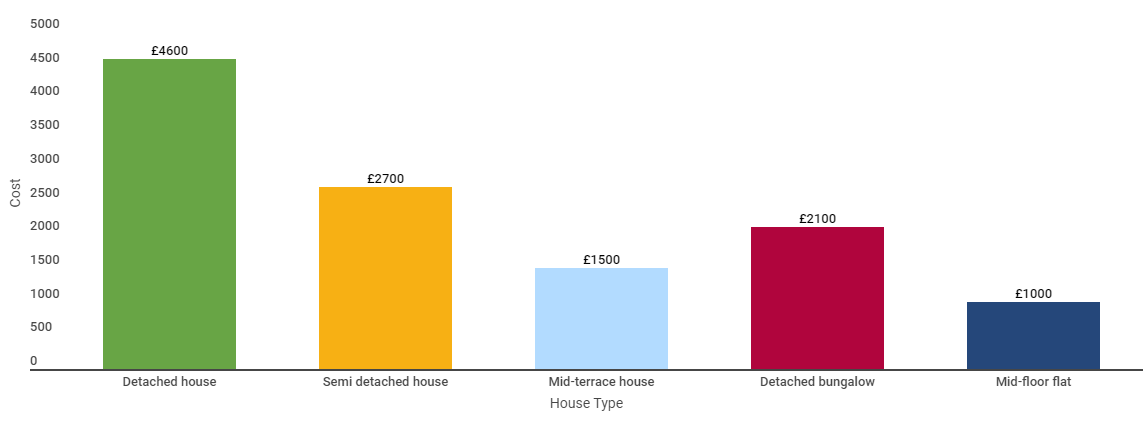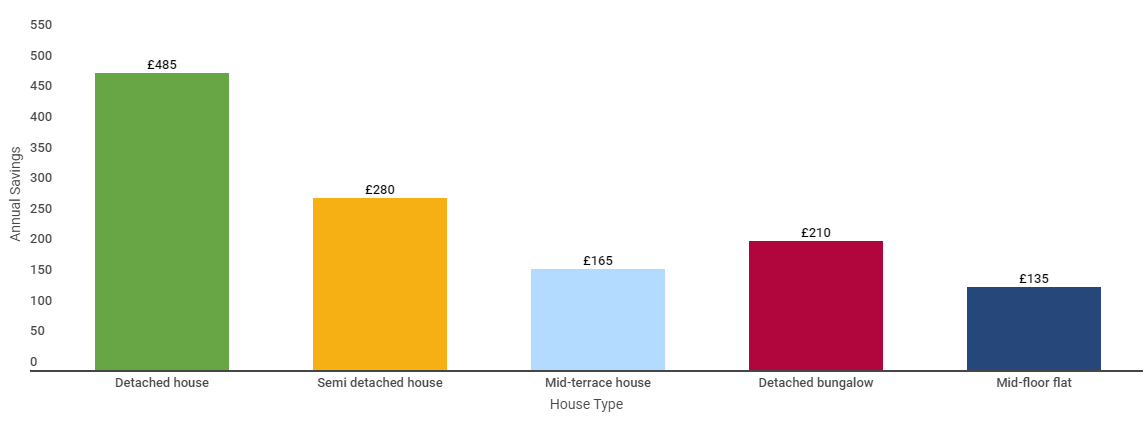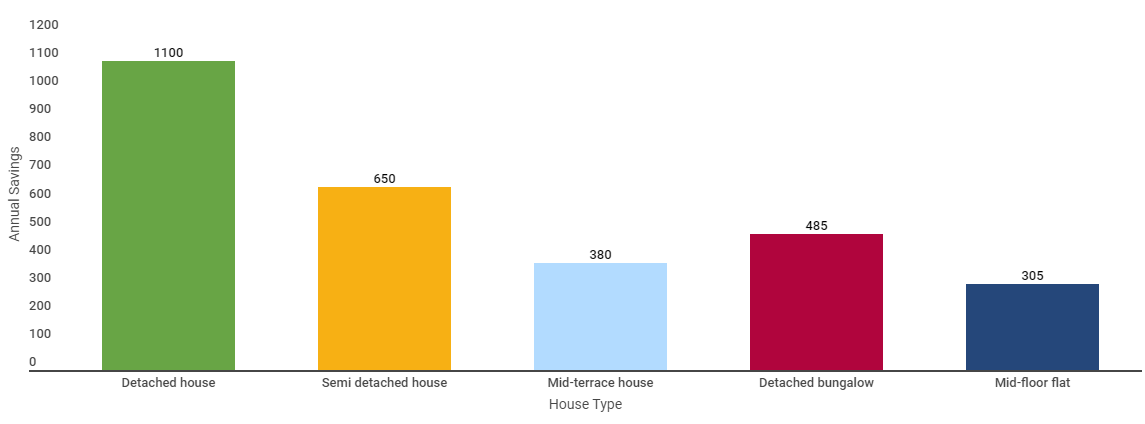Free cavity wall insulation could save you £395 on your energy bills
If your home has uninsulated walls, almost one-third of heat loss occurs through them. By taking advantage of the ECO4 cavity wall insulation grant for cavity walls, you could potentially reduce your energy bills by up to £395 per annum.
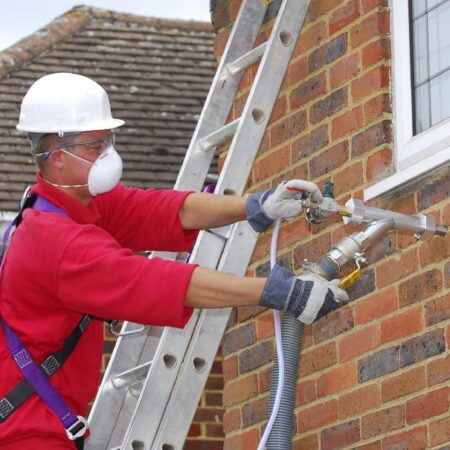
Why do I need cavity wall insulation?
Homes that are constructed after 1920s often have cavity walls, whereas insulation within the cavity became standard practice in the 1990s. for homes built before this period of time, insulation may be absent completely.
In a household, uninsulated walls contribute significantly to reduce heat accounting for around one-third of total heat loss.
Insulating your walls could result in substantial savings according to the figures from the Energy Saving Trust. A typical gas-heated semi-detached house could save up to £395 annually by insulating the walls.
The chart below outlines the potential costs associated with a typical installation, the savings on your annual energy bill (£/year) and the reduction in kilograms of CO2 emissions achievable through cavity wall insulation.
These estimates are modified specifically for gas heated homes and reflect the average installation cost without subsidies. The figures are calculated using fuel prices effective as of January 2024.
What is cavity wall insulation?
There are numerous types of cavity wall insulation available but the method we employ involve injecting graphite enhanced polystyrene beads into the space between inner and outer walls.
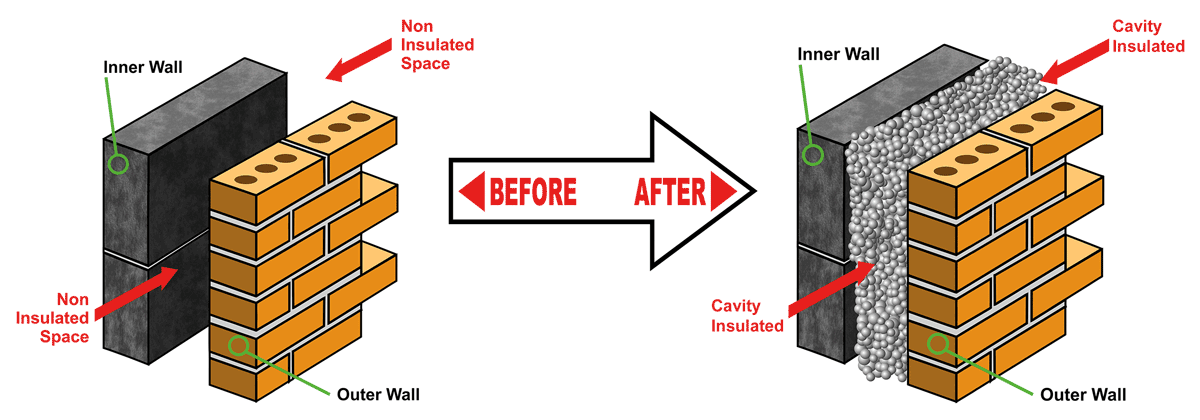
Filling the gap between the two walls helps slow down heat loss which results in to a warmer home for you. In addition, a warmer home reduces the likelihood of condensation and mold formation on the walls.
The incorporation of polystyrene beads ensures the cavity functions according to its original design. Any moisture that infiltrates the gap can safely disperse, preventing its access into interior of your home.
The customer’s satisfaction and peace of mind is our philosophy. ECO PRO provides a complete cavity wall insulation with a 28-year insurance backed guarantee.
How do I know if I’ve got a cavity wall?
Examine the arrangement of bricks if the brickwork pattern on the exterior of your home is visible. It is probable that your home has a cavity wall if you observe a consistent pattern of long bricks.
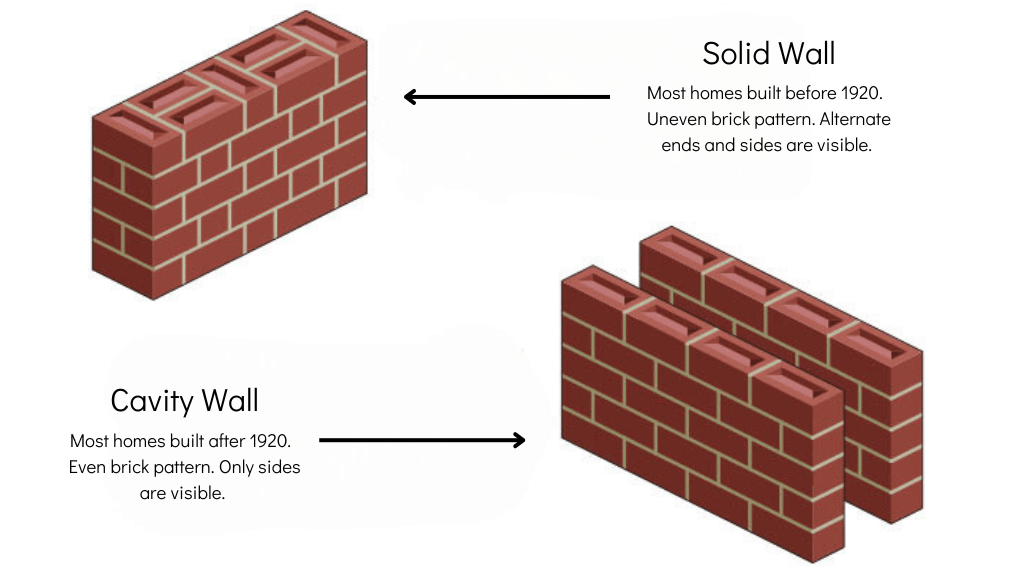
If the brickwork displays an alternating pattern of long and short bricks, it’s possible that your home has solid walls. An alternative method is to gauge the thickness of the wall at a window opening if the brickwork has been covered up. Id a wall is exceeding 26cm in thickness means it contains cavity whereas a thinner wall usually around (22cm or 9 inches) suggests solidity.
A greater thickness is usually exhibited by stone walls. Assistance is available through our solid wall insulation grant, In the event of solid walls or other wall types like timber frame, catering to both internal and external wall insulation necessity.
Ventilation
Installation of insulation restricts air circulation, potentially resulting in poor ventilation with in the home. Inadequate ventilation can lead to the formation of condensation contributing to the development and growth of mold and damp patches.
We will upgrade your home’s ventilation system to meet current high standards and install supplementary ventilation as necessary under ECO4 grant to diminish or to reduce the risk.
Do I Qualify for a free insulation grant?
You or you tenants (if applicable) must receive one of these benefits outlines below to be eligible for a complimentary insulation grant:
I’m not receiving one of these benefits, can I be helped?
About half of the energy efficiency upgrades implement in England, Wales and Scotland can be accomplished via the ECO4 Flex program. This initiative targets households with a combined gross income under £31,000 annually or individuals facing specific health conditions that increase susceptibility to cold temperatures.
Local authorities oversee the ECO4 Flex scheme’s implementation in respective areas, verifying eligibility based on income or health status. The scheme is gradually being introduces and is anticipated to be fully operated by April 2023.
We’ll confirm whether applications are currently being accepted in your region, as part of application process.
I’m a Landlord, can I get any help?
Started in April 2018, the Minimum Energy Efficiency Standards (MEES) requite all rented properties to have at least an ‘E’ energy efficiency rating, unless they are exempt.
However, by 2025, all properties rented on new leases must meet a minimum ‘C’ energy efficiency rating. Existing tenants’ properties must meet this standard by 2028. Failure to comply could result in fines of up to £30,000.
These adjustments align with the government’s goal of achieving net zero emissions by 2050. They will also extend to properties being sold starting in 2035.
How can we help?
Your property may qualify for a grant to enhance its energy efficiency, such as by installing cavity wall insulation, if your tenant is receiving any of these benefits mentioned earlier.
Furthermore, all properties with an ‘E’ energy rating must achieve at least a ‘C’ rating after implementing energy efficiency measures, according to the ECO4 scheme.
Applying for a grant now
Applying for your free insulation and heating grant is as easy as 1, 2, 3…
-
1
Apply
Subsequent to finishing the internet-based application, we will reach out to you to check whether you are qualified free of charge sun powered, warming updates, or protection through the ECO4 or ECO4 Flex program.
-
2
Survey
After we've confirmed your qualification, we'll set up a period for one of our Retrofit Assessors to complete a free, no-commitment overview, providing you with a gauge of the potential energy reserve funds.
-
3
Install
One of our fully qualified and certified installers will install your free home upgrades, taking care to remove any waste and clean up any mess left behind.
